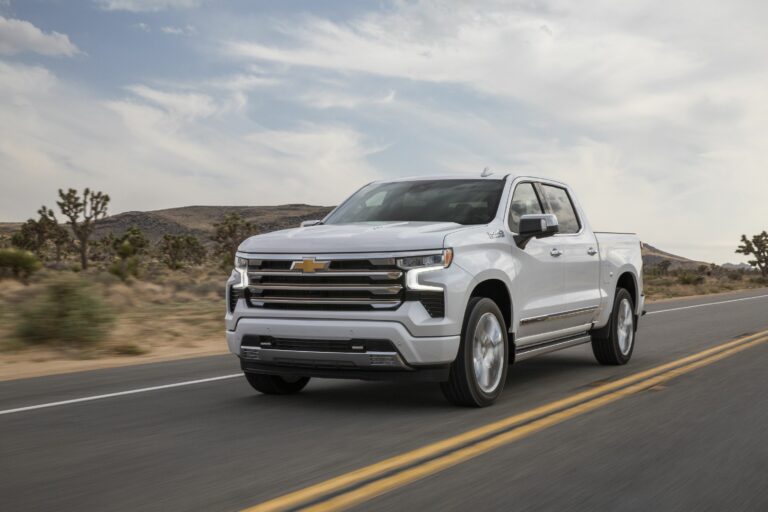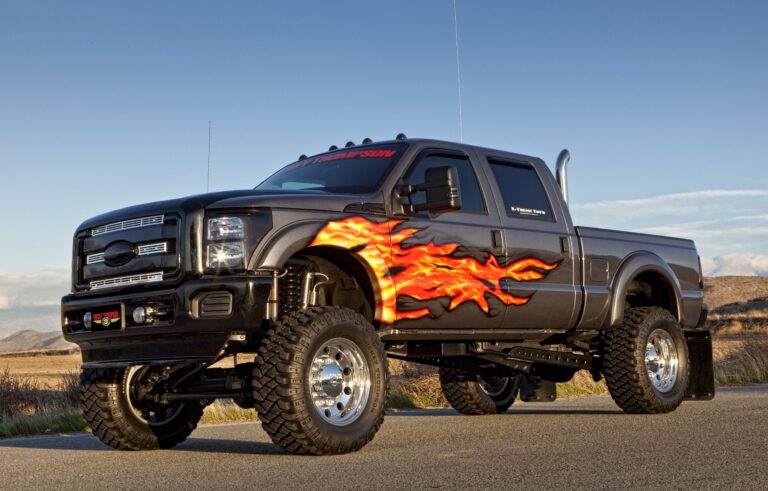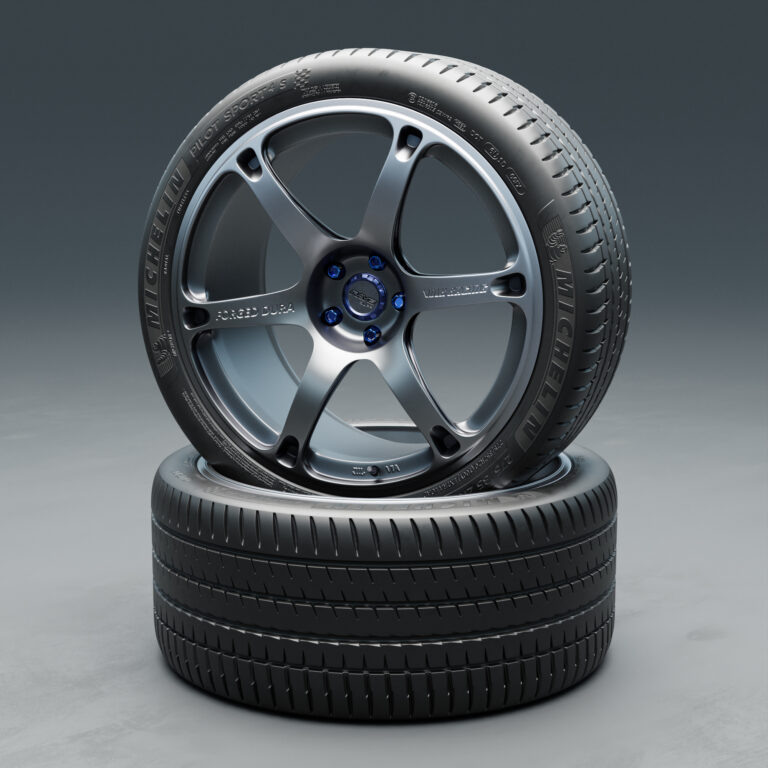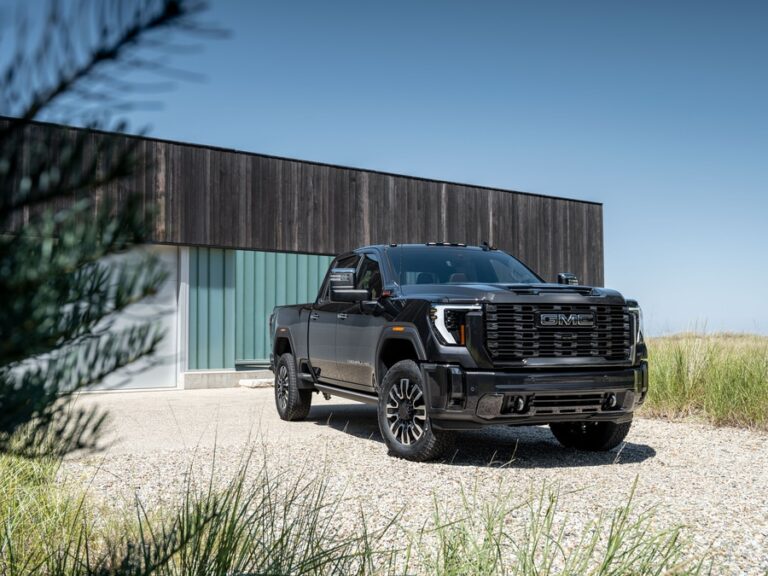What Year Leer Topper Will Fit On A Silverado: A Comprehensive Guide
What Year Leer Topper Will Fit On A Silverado: A Comprehensive Guide cars.truckstrend.com
For many Silverado owners, a truck bed topper isn’t just an accessory; it’s an essential extension of their vehicle, transforming an open bed into a secure, weather-protected cargo area or a comfortable camping shell. Among the myriad of brands, Leer stands out as a top choice, renowned for its quality, durability, and wide range of styles. However, the seemingly simple question, "What year Leer topper will fit on my Silverado?" often leads to confusion. The answer is far from a simple year-to-year match. It involves understanding specific truck generations, bed dimensions, and subtle design nuances.
This comprehensive guide will demystify the process, providing you with the knowledge and actionable insights needed to confidently select the perfect Leer topper for your Chevrolet Silverado, ensuring a snug fit, optimal functionality, and aesthetic harmony.
What Year Leer Topper Will Fit On A Silverado: A Comprehensive Guide
Understanding Leer Topper Compatibility: More Than Just a Bed Length
The primary challenge in fitting a Leer topper to a Silverado isn’t just matching the bed length. While crucial, it’s merely one piece of a complex puzzle. Truck manufacturers like Chevrolet regularly update their vehicle designs, leading to distinct "generations" of the Silverado. Each generation often features unique bed rail contours, tailgate shapes, cab profiles, and overall body lines. A Leer topper is custom-molded to fit these specific dimensions and contours. Therefore, a topper designed for a 2005 Silverado (part of the GMT800 generation) will almost certainly not fit a 2015 Silverado (K2XX generation) with the same bed length, due to these underlying design differences.
Key Factors Determining Leer Topper Fitment
To ensure a precise fit, consider these critical factors:
-
Bed Length: This is the most fundamental dimension. Silverados come in several standard bed lengths, which have remained relatively consistent across generations, though exact measurements might vary slightly:
- Short Bed (or Standard Box): Typically around 5 feet 8 inches to 5 feet 10 inches (e.g., 5.8 ft, 5′ 9"). Common on Crew Cab models.
- Standard Bed (or Regular Box/Short Box): Typically around 6 feet 5 inches to 6 feet 7 inches (e.g., 6.5 ft, 6′ 6"). Common on Extended Cab and some Crew Cab models.
- Long Bed (or Long Box): Typically around 8 feet. Primarily found on Regular Cab and some Extended Cab models, often for work trucks.
- Actionable Tip: Always measure your truck bed precisely from the inside front bulkhead to the inside of the closed tailgate, along the top edge of the bed rails.


-
Silverado Generation/Body Style: This is arguably the most critical factor. Each generation has unique body lines that a topper must conform to, especially around the cab and tailgate.
- GMT400 (1988-1998/2000 C/K Series): These older trucks have distinct, boxier body lines. Toppers for these are often harder to find new but might be available used.
- GMT800 (1999-2006, Classic 2007): Characterized by smoother, more rounded lines than their predecessors. This generation covers the popular "Chevy Silverado" era.
- GMT900 (2007-2013, Classic 2014): Introduced a more angular, aggressive styling with improved aerodynamics. Note the "Classic" models for 2007 and 2014, which were carried over from the previous generation during the transition.
- K2XX (2014-2018, Classic 2019): A significant redesign, featuring sharper lines, more prominent wheel arches, and refined interiors.
- T1XX (2019-Present): The latest generation, with a more sculpted and modern appearance, distinct bed rail caps, and tailgate designs.
- Actionable Tip: Know your Silverado’s exact model year. If it’s a transition year (like 2007 or 2014), determine if it’s the "Classic" (old body style) or the new body style for that year.

-
Cab Type (Regular, Extended, Crew Cab): While the bed length is primary, the cab type can subtly influence the front profile of the topper, ensuring it blends seamlessly with the cab’s roofline and rear window. Leer designs toppers to complement the specific cab lines of each Silverado variant.
Identifying Your Silverado’s Bed Length and Generation
- Bed Length Measurement: Use a tape measure. Open your tailgate. Measure from the inside edge of the front bulkhead (the wall closest to the cab) to the inside edge of the closed tailgate. Measure along the top of the bed rails.
- Generation Identification:
- Owner’s Manual/Door Sticker: Your vehicle’s documentation will confirm its exact model year.
- Visual Cues: If uncertain about transition years, a quick online search for "2007 Silverado classic vs new body style" or "2014 Silverado K2XX vs classic" will show clear visual differences. Pay attention to headlights, grille, and the overall shape of the cab and bed.
- VIN Decoder: Use an online VIN decoder (Vehicle Identification Number) to get precise information about your truck, including its year, make, model, and sometimes even specific body configurations.
Popular Leer Topper Models and Their Features
Leer offers a variety of topper models, each with distinct features and aesthetics. While the model itself (e.g., 100R) remains consistent, it will be manufactured with specific molds to fit your Silverado’s generation and bed length.
- Leer 100R (Cab-High): The most popular and economical choice. It matches the height of the truck’s cab, offering a sleek, integrated look. Features typically include a T-handle lock, fixed front window, and side sliding windows.
- Leer 100XR (Cab-High with Recessed Frame): Similar to the 100R but with a recessed frame for the side windows, giving a cleaner appearance. Often includes a single T-handle or rotary latch system.
- Leer 100XQ (Cab-High, SUV-Style): Premium cab-high model with frameless windows and a curved glass rear door for an SUV-like appearance. Often includes an interior headliner and 12V dome light.
- Leer 180 (Mid-Rise): Provides about 2-3 inches of additional interior height over the cab, offering more cargo space and easier access. Ideal for those needing a bit more vertical room.
- Leer 122 (High-Rise): Offers the maximum possible interior height, typically 4-6 inches above the cab. Perfect for contractors, campers, or anyone needing to haul tall items.
The Importance of "Matching" Generations
This cannot be stressed enough: a Leer topper from one Silverado generation will not properly fit another, even if the bed length is identical. The subtle changes in bed rail caps, tailgate angles, and cab contours mean that the topper will either not seat correctly, leave unsightly gaps, or put undue stress on the topper and truck bed, potentially leading to damage or water leaks.
For example:
- A topper for a 6.5-foot bed on a 2004 Silverado (GMT800) will not fit a 6.5-foot bed on a 2016 Silverado (K2XX).
- A topper for an 8-foot bed on a 2010 Silverado (GMT900) will not fit an 8-foot bed on a 2020 Silverado (T1XX).
Always purchase or seek out a Leer topper specifically designed for your Silverado’s exact model year and bed length.
Tips for Finding the Right Topper
- Consult Leer’s Official Fitment Guides: The most reliable source is Leer’s official website or a certified Leer dealer. They have detailed fitment charts that specify which topper models are available for each Silverado year and bed configuration.
- Measure Accurately: Reiterate the importance of precise bed measurements.
- Specify Your Truck’s Details: When inquiring at a dealer or searching online, always provide your Silverado’s:
- Exact Model Year (e.g., 2017)
- Body Style/Generation (e.g., K2XX if applicable)
- Cab Type (e.g., Crew Cab)
- Bed Length (e.g., 5.8 ft)
- Consider Used Toppers Carefully: Buying used can save significant money. However, verify the donor truck’s exact year and bed length. Inspect the topper for cracks, damage to the fiberglass, condition of the seals (especially around the base and windows), and proper latching mechanisms. A good seal is crucial for weather protection.
- Paint Match: Unless you plan to repaint, finding a used topper with a perfect paint match to your truck can be challenging. Slight variations are common.
- Professional Installation: While DIY installation is possible for some, professional installation by a Leer dealer ensures proper alignment, secure clamping, and correct electrical wiring for the third brake light and interior dome light. They also typically include weatherstripping.
Challenges and Solutions
- Minor Gaps/Misalignments: Even with the correct topper, minor variations can occur. High-quality weatherstripping and shims can often resolve small gaps, preventing water intrusion.
- Electrical Hookup: Most toppers have a third brake light and often an interior light. These require wiring to your truck’s electrical system. Wiring kits are available, or a professional installer can handle it.
- Finding an Exact Match for Older Trucks: As Silverados age, new Leer toppers for those generations become less available. Used markets (Facebook Marketplace, Craigslist, local classifieds) are your best bet. Be prepared for potential repairs or repainting.
- Bed Liners: Over-the-rail bed liners can sometimes interfere with the topper’s fit. Under-the-rail liners are generally preferred. If you have an over-the-rail liner, ensure it doesn’t prevent the topper from seating flush.
Estimated New Leer Topper Price Range for Silverado
It’s important to note that Leer topper prices vary significantly based on the specific model, features (e.g., headliner, interior light, roof rack, remote lock), dealer pricing, geographic location, and current promotions. The table below provides a general estimated price range for new Leer toppers designed to fit various Silverado generations and bed lengths. These prices typically do not include installation or specific options. Used toppers can be found for a fraction of these prices, often ranging from $300 to $1,500 depending on condition and model.
| Leer Topper Model | Typical Features | Estimated New Price Range (USD) | Fitment Notes (Applies to all Silverado Generations) |
|---|---|---|---|
| 100R | Cab-high, fixed front window, side sliders, T-handle lock | $2,000 – $2,800 | Available for all Silverado bed lengths & generations |
| 100XR | Cab-high, recessed side windows, single T-handle/rotary latch | $2,200 – $3,000 | Available for all Silverado bed lengths & generations |
| 100XQ | Premium cab-high, frameless windows, curved glass rear door, interior headliner | $2,800 – $3,800 | Available for most Silverado bed lengths & generations |
| 180 | Mid-rise (approx. 2-3" above cab), side sliders, T-handle lock | $2,300 – $3,200 | Available for most Silverado bed lengths & generations |
| 122 | High-rise (approx. 4-6" above cab), maximum cargo volume | $2,500 – $3,500 | Available for most Silverado bed lengths & generations |
Disclaimer: These are approximate retail prices for new units and do not include optional features, color matching, freight, or installation costs. Actual prices will vary by dealer and region.
Frequently Asked Questions (FAQ)
Q1: Can I put a Leer topper from a Ford F-150 on my Silverado?
A1: Absolutely not. Truck beds, even with similar dimensions, have unique contours, bed rail shapes, and cab profiles that are specific to each manufacturer and model. A topper is custom-molded to fit these specific characteristics.
Q2: My Silverado is a "Classic" model for a transition year (e.g., 2007 Classic). Does that matter?
A2: Yes, it matters significantly. A "Classic" model from a transition year (like 2007 or 2014) refers to the older body style that was carried over for that year. You need a topper designed for the previous generation’s body style, not the new one introduced in that same year. Always clarify if your truck is the "Classic" or the "New Body Style."
Q3: Does having a spray-in or drop-in bed liner affect the topper fit?
A3: Spray-in bed liners typically do not affect fit as they are very thin. Drop-in (over-the-rail) bed liners can sometimes cause issues by raising the bed rails slightly or interfering with the topper’s clamping system. Under-the-rail drop-in liners are generally fine. Always ensure the topper can sit flush on the bed rails.
Q4: How do I measure my truck bed accurately?
A4: Use a tape measure and measure from the inside front bulkhead (the wall closest to the cab) to the inside of the closed tailgate. Measure along the top edge of the bed rails. Do not measure diagonally or from the ground.
Q5: Is it worth buying a used Leer topper?
A5: Yes, it can be a great way to save money. However, be diligent. Ensure the topper is for your exact Silverado year and bed length. Inspect it thoroughly for damage, check the seals, and confirm all latches and windows work correctly. Factor in potential costs for repainting or seal replacement.
Q6: Can I install a Leer topper myself?
A6: Yes, with the right tools and a second person, it’s possible. However, professional installation is recommended to ensure proper alignment, secure clamping, and correct electrical wiring, which prevents leaks and ensures safety (e.g., third brake light function).
Conclusion
Choosing the right Leer topper for your Silverado is a crucial decision that impacts both functionality and aesthetics. The key to a perfect fit lies in understanding that compatibility extends far beyond just bed length. It’s about precisely matching your Silverado’s specific generation, body lines, and cab profile. By accurately identifying your truck’s details, consulting Leer’s resources, and carefully considering the nuances of fitment, you can confidently select a topper that seamlessly integrates with your Silverado, providing years of reliable service and enhancing your truck’s utility. Research, measure, and if in doubt, consult with a certified Leer dealer – your perfect topper is out there!






